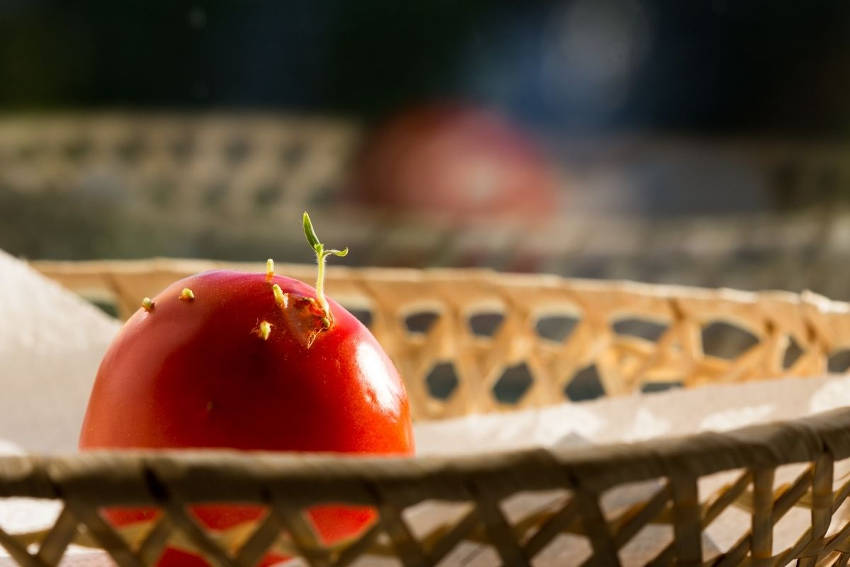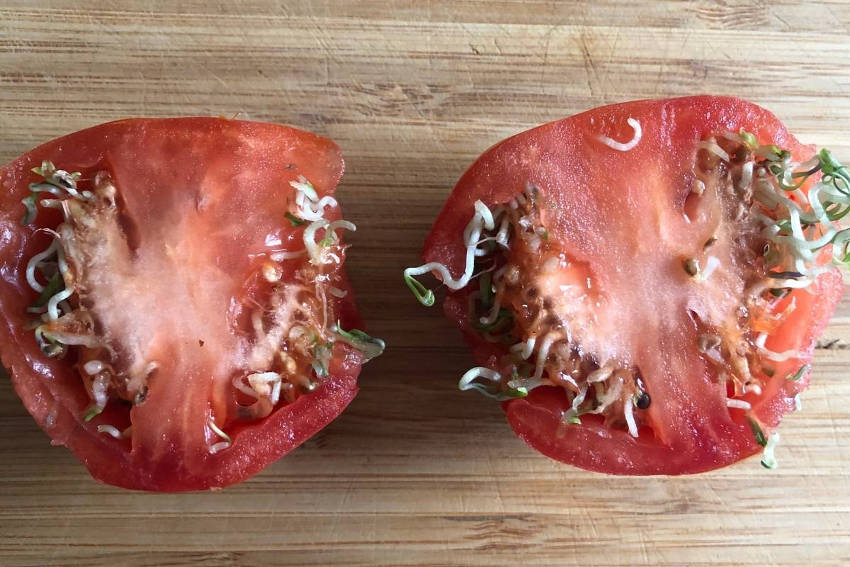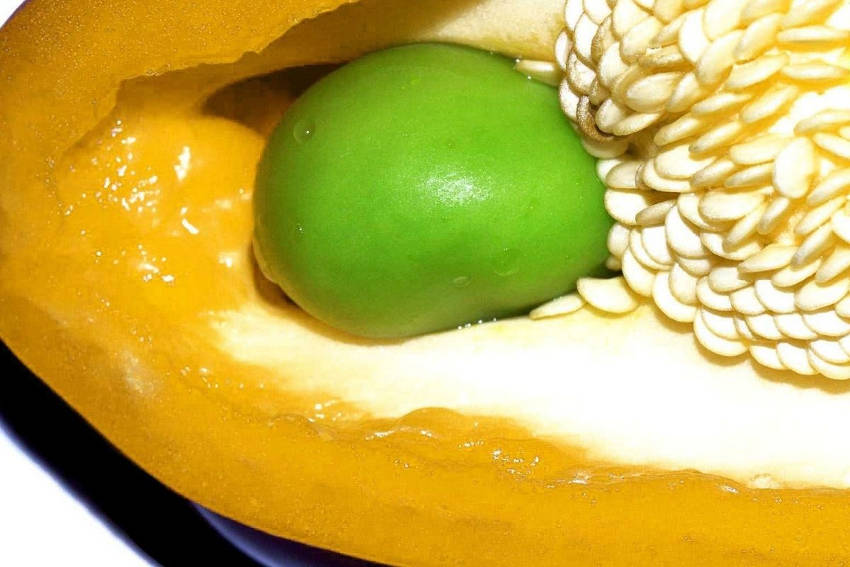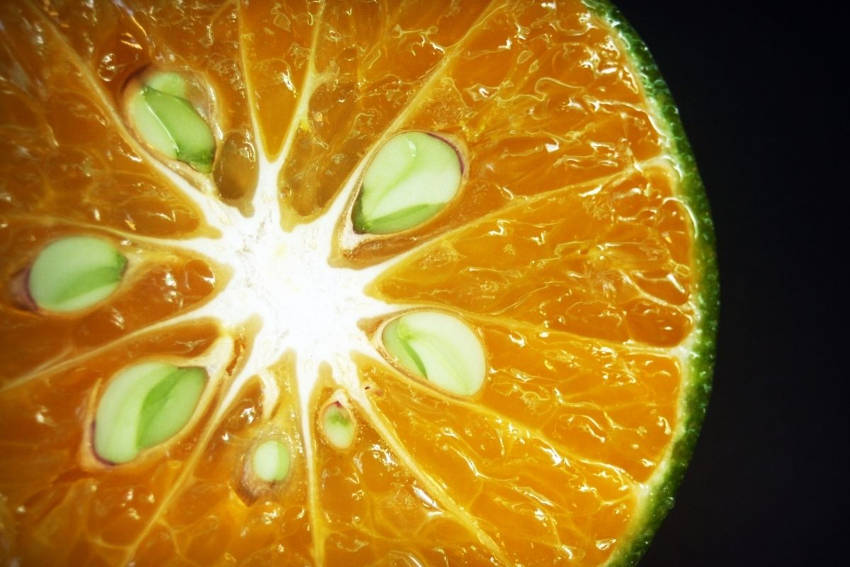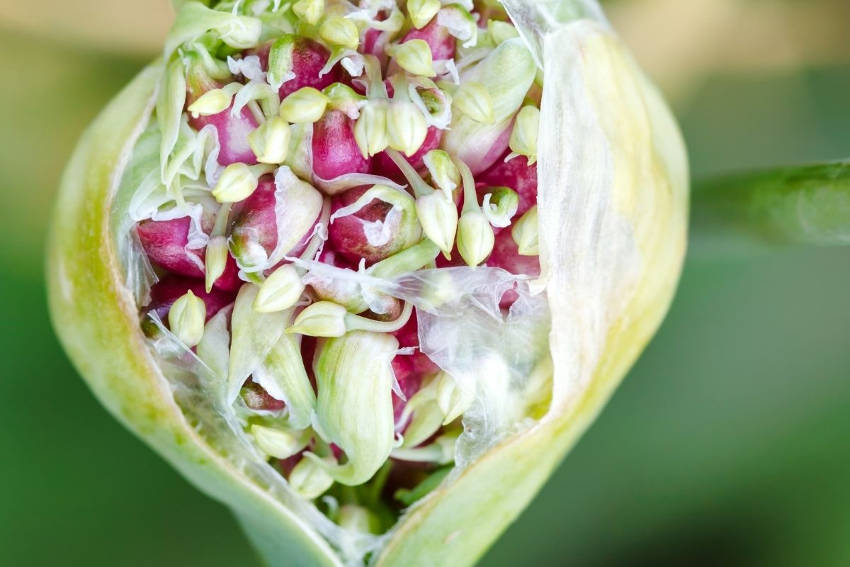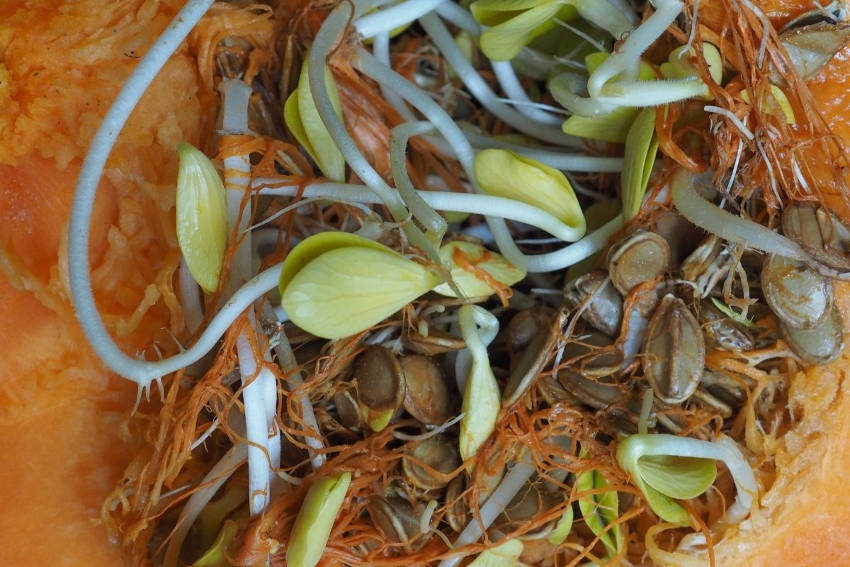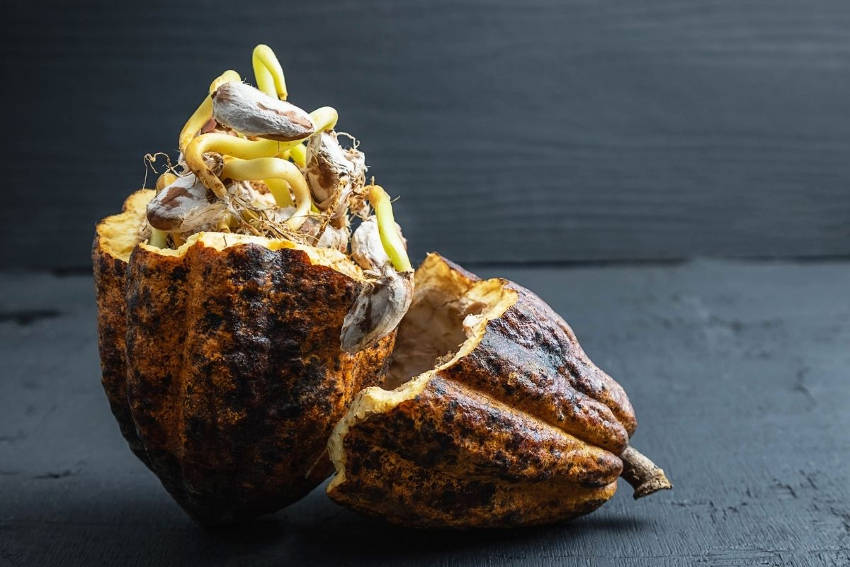Seeds are a remarkable delivery system for new generations of plants. Within their tiny form they contain all the information, energy, and nutrients necessary to power a seedling through to the soil's surface and begin life as an independent plant.
Of course, not everything always goes to plan. Germination can fail for many reasons, most of them happening quietly and without any great fanfare. But sometimes the process can go awry in a much more obvious and interesting way.
The seeds on your strawberries may germinate while the fruit's still attached to its mother plant, sending out dozens of green shoots from the red surface, and giving the familiar fruit a mutated and alien appearance.
Spiraling green tendrils can sprout from segments of citrus fruit, looking disturbingly like some form of disastrous worm infection. The surface of your tomatoes can start to bulge and pop nightmarishly as baby tomato vines push upward and outward from its heart.
But however unpleasant these effects may look, they're rarely the result of an invading parasite or an exotic disease. All of these startling developments are examples of a process known as vivipary, taken from the Latin for 'live birth'. It involves seeds germinating before their allotted time, and it's a relatively rare but fascinating phenomenon.
What Causes Vivipary?
To explain why vivipary happens it's helpful to look at a seed's nature. Seeds really want to germinate, it's what they're designed for. But nearly all seed-bearing fruits produce a hormone which suppresses the seeds' urge to sprout and keeps them in a dormant state. Once the fruit or parent plant dies, or the seeds are set free by animal feeding, the hormone's effect starts to dissipate and the seeds are set along the path toward germination once conditions are suitable.
There are some species which lack this suppressant hormone as a central part of their reproductive strategy. For example, for fruits which develop in climates without large seasonal variations, a delay in germination could be largely pointless. Or, plants in mangrove swamps reproduce more effectively when germinated seeds fall into the water below and can immediately start to take root, rather than risk the seedlings being washed away to the deep.
But for whatever reason, seeds that are naturally without the dormancy hormone have evolved to germinate while still attached to the parent plant, either inside or on the surface of the fruits that host them.
When Hormones Go Missing
Occasionally, however, the essential hormone is missing in seeds which would usually bide their time before germination. This can be down to a freak anomaly in the plant's growth, or it can be because picked fruits have been in storage for a lengthy period and the hormone supply has run out.
Either way, the lack of the hormone leads to the plant behaving in an unexpected way, and sprouting the next generation of seedlings from the fruit itself.
Which Plants Does Vivipary Usually Affect?
Vivipary can happen in most fruits, but is particularly common in strawberries, tomatoes, peppers, pumpkin, avocado, and citrus. It's also relatively common in corn ears and similar plants which can trap moisture under their husks, producing the dark, damp conditions that spur the seeds into growth.
What to Do if You See Vivipary in a Plant
While vivipary can be a disconcerting sight the first time you encounter it, there's no need to panic. Although fairly rare, it's completely normal and doesn't mean there's anything wrong with the fruit. Vivipary is highly undesirable for commercial fruit growers who want to sell their crop, but for a home gardener it's mainly a chance to experience something new and unusual.
If the strange appearance of the sprouted seeds bothers you, simply remove the shoots and discard them before eating the rest of the fruit. But remember that if the seeds are edible, the shoots will be too, however unappetising they may appear.
But if the thought of tucking into the strange fruit is too much to bear, you could try planting the whole bunch of proto-seedlings and see what happens. Strawberries in particular are reported to have at least limited success in developing new plants from the viviparous fruits.
In any case, we'd love to see any examples of vivipary you come across, whether in a fruit or from a resulting plant. Please share a photo on Instagram or Facebook and tag us in with #theseedcollection, so that we can share your enjoyment of this weird and wonderful phenomenon.
